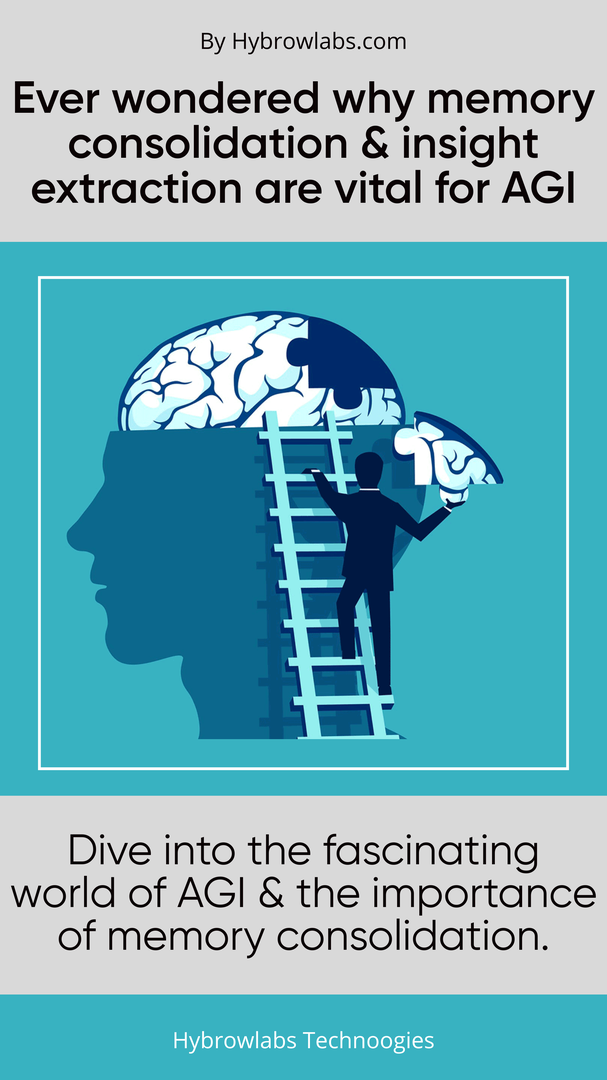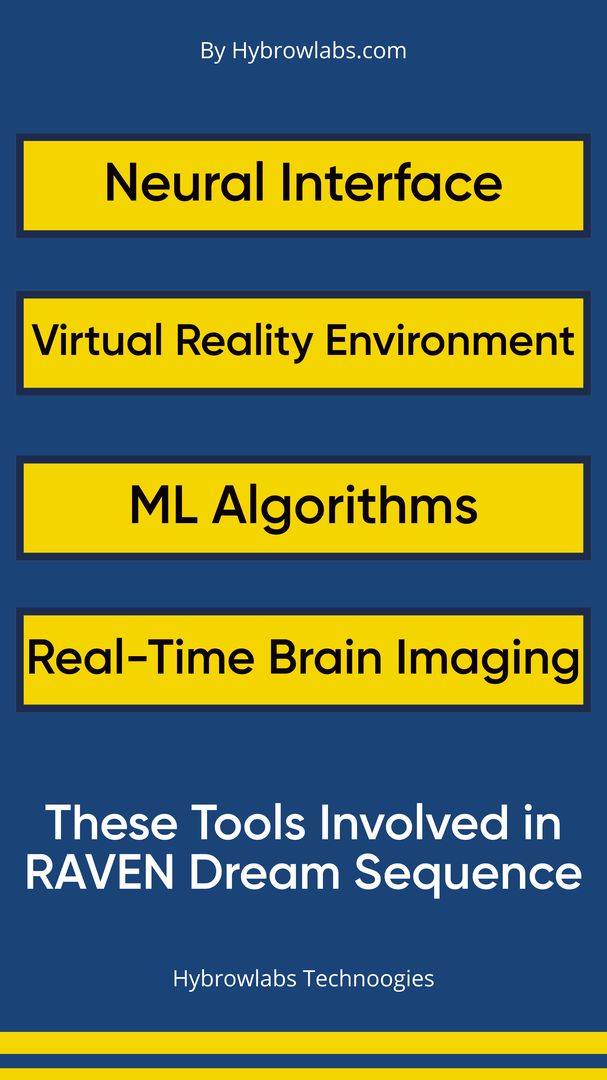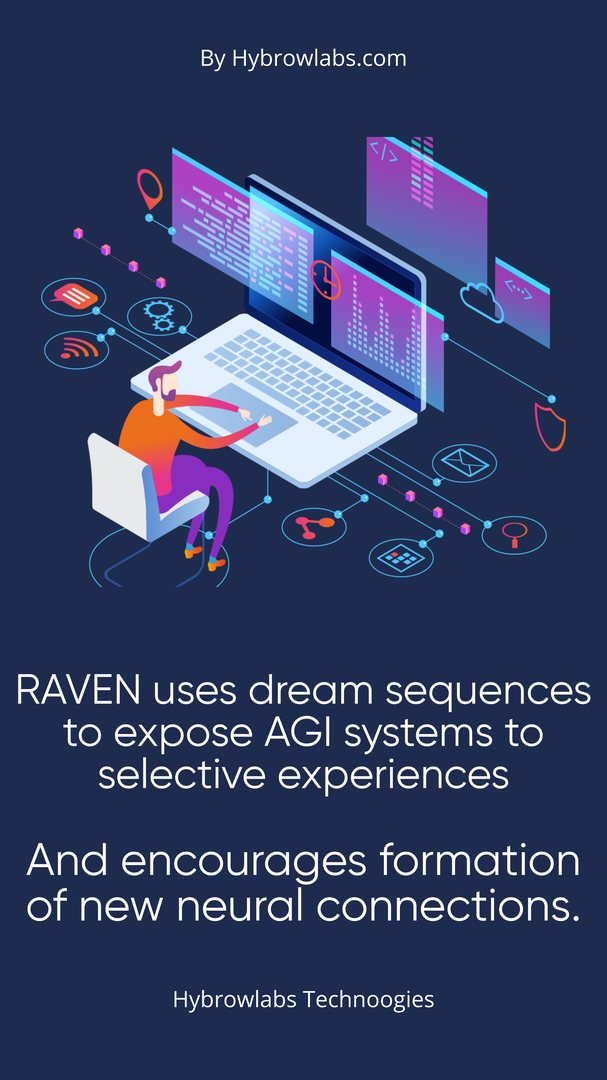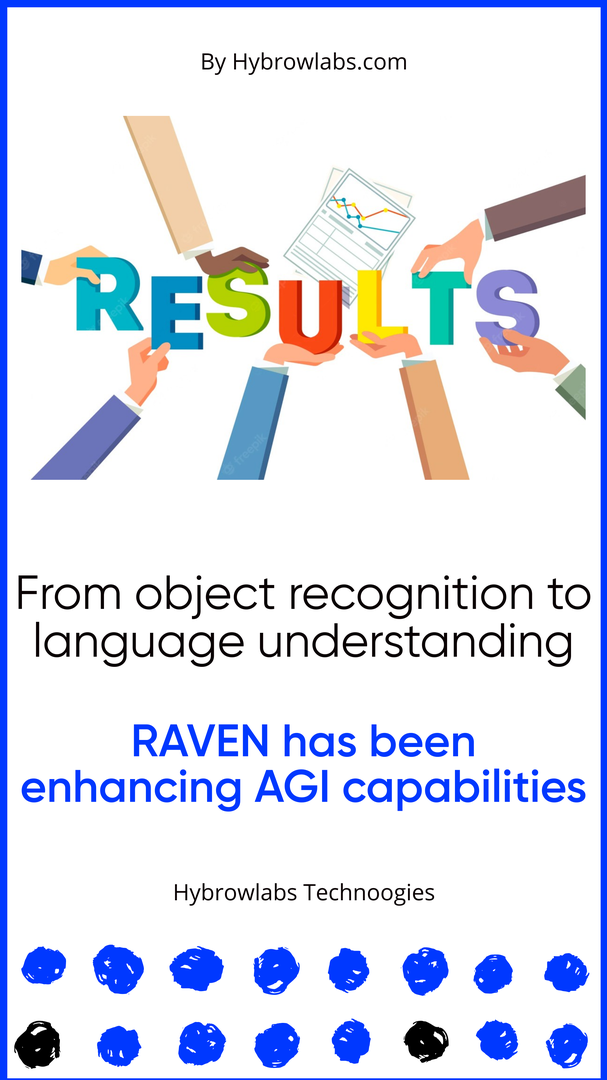
Memory consolidation & insight extraction are critical components for achieving Artificial General Intelligence (AGI) & developing robust cognitive architectures. Memory consolidation involves the transfer of information from short-term memory to long-term memory, while insight extraction refers to the ability to recognize patterns & make connections between different pieces of information.
How can RAVEN Dream Sequence potentially achieve memory consolidation & insight extraction?

One promising tool for achieving these goals is the RAVEN Dream Sequence, which is a framework for training AGI systems using simulated dream experiences. This approach aims to enhance memory consolidation by selectively replaying important experiences during sleep & to facilitate insight extraction by encouraging the brain to form new connections between different memories.
By leveraging the power of memory consolidation & insight extraction, AGI systems may be better equipped to learn from experience, reason abstractly & perform complex tasks. As such, the development of tools like the RAVEN Dream Sequence is crucial for advancing the field of AGI & unlocking the full potential of cognitive architectures.
What is memory consolidation & insight extraction?
Memory consolidation is the process of transferring information from short-term memory to long-term memory. It involves the strengthening of neural connections between different brain regions, which allows the brain to retain information over extended periods of time. Insight extraction refers to the ability to recognize patterns & make connections between different pieces of information. It is a crucial component of learning & problem-solving.
A. Why are memory consolidation & insight extraction important for AGI & cognitive architecture?
- Effective memory consolidation is necessary for AGI systems to learn from experience & adapt to new situations.
- Insight extraction enables AGI systems to recognize patterns & make connections between different pieces of information, which is essential for reasoning & decision-making.
- AGI systems with robust memory consolidation & insight extraction capabilities may be better equipped to perform complex tasks & solve difficult problems.
- Cognitive architectures that incorporate these processes may be more efficient, effective & adaptable.
B. What are the current limitations in achieving effective memory consolidation & insight extraction?
- Limited understanding of the neural mechanisms underlying memory consolidation & insight extraction.
- Difficulty in selectively strengthening specific neural connections in the brain.
- The challenge in replicating the complexity & variability of human experiences in simulated environments.
- Lack of effective methods for monitoring & measuring memory consolidation & insight extraction in AGI systems.
RAVEN Dream Sequence as a Potential Solution for Memory Consolidation & Insight Extraction:
The RAVEN Dream Sequence is a potential solution for achieving effective memory consolidation & insight extraction in AGI systems. It is a framework for training AGI systems using simulated dream experiences, with the aim of enhancing memory consolidation & facilitating insight extraction.
Tools Involved in the Process:

we delve into the tools employed within the RAVEN dream sequence and their potential implications.
A. Neural Interface:
At the core of the RAVEN system lies a highly advanced neural interface that establishes a direct connection between the human brain and the virtual environment. This interface allows for bidirectional communication, enabling researchers to not only observe brain activity but also influence and manipulate the dream experience. It provides a means to explore the depths of memory and facilitate controlled interactions within dream sequences.
B. Virtual Reality Environment:
RAVEN employs a sophisticated virtual reality (VR) environment to simulate dream scenarios. This technology recreates realistic and immersive dreamscapes that can elicit memories and engage the dreamer's senses. By incorporating visual, auditory, and haptic stimuli, the VR environment enhances the dream experience, aiding in memory consolidation and stimulating cognitive processes.
C. Machine Learning Algorithms:
To extract insights from dream sequences, RAVEN utilizes machine learning algorithms. These algorithms analyze the dream content, identifying patterns, connections, and correlations within the dreamer's experiences. By uncovering hidden relationships and latent information, machine learning algorithms offer a valuable tool for gaining deeper insights into the dreamer's subconscious mind.
D. Emotional Monitoring:
Understanding the emotional context of dream experiences is crucial for comprehending the dreamer's memory consolidation and extracting insights. RAVEN employs various techniques to monitor and measure emotional responses during dream sequences. Physiological sensors and facial expression recognition software are utilized to gauge emotional states such as joy, fear, sadness, or surprise. By capturing and analyzing emotional data, researchers can better understand the impact of emotions on memory and cognition.
E. Real-Time Brain Imaging:
To gain a comprehensive understanding of the brain's activity during dream sequences, RAVEN employs real-time brain imaging techniques such as functional magnetic resonance imaging (fMRI) or electroencephalography (EEG). These imaging methods enable researchers to map neural activity and identify specific brain regions associated with memory consolidation and cognitive processes. By correlating brain activity with dream content, RAVEN aims to unravel the mechanisms underlying memory formation and retrieval.
How the Tools works:

- The AGI system is exposed to a series of simulated dream experiences that are designed to selectively replay important experiences & encourage the formation of new neural connections.
- The dreams are generated using a combination of reinforcement learning algorithms & generative models, which allow for a high degree of flexibility & adaptability.
- During the dream sequence, the AGI system is monitored & its neural activity is analyzed to identify patterns of activity that correspond to memory consolidation & insight extraction.
- Based on these patterns, the dream sequence is adjusted to optimize memory consolidation & insight extraction.
Pros & Cons: Using RAVEN Dream Sequence for AGI & Cognitive Architecture:
Benefits:
- Enhances memory consolidation & facilitates insight extraction, which may improve the ability of AGI systems to learn from experience & perform complex tasks.
- Offers a flexible & adaptable approach to training AGI systems, which may be more effective than traditional methods.
- Provides a way to monitor & measure memory consolidation & insight extraction in AGI systems, which may help researchers to better understand these processes.
Limitations:
- The complexity & variability of human experiences may be difficult to replicate in simulated environments, which may limit the effectiveness of the dream sequence.
- The reinforcement learning algorithms & generative models used to generate the dream experiences may be computationally intensive & require significant resources.
- The effectiveness of the dream sequence may depend on the specific architecture & design of the AGI system, which may limit its applicability to other systems.
Results of Using the RAVEN Dream Sequence in Various Contexts:

- The RAVEN Dream Sequence has been used to train AGI systems to perform a variety of tasks, such as object recognition, language understanding & game playing.
- The dream sequence has also been used to enhance memory consolidation & facilitate insight extraction in humans, with promising results.
Applications of RAVEN Dream Sequence in AGI & Cognitive Architecture:
- The RAVEN Dream Sequence has the potential to be used in a wide range of applications, from autonomous vehicles & robotics to natural language processing & decision-making systems.
- In cognitive architecture, the dream sequence could be used to enhance the learning & problem-solving capabilities of intelligent systems.
- The dream sequence could also be used to train AGI systems for specific tasks or domains, such as medical diagnosis or financial forecasting.
Pushing the Boundaries: Potential Future Developments & Improvements:
- One potential area for improvement is the ability to generate more complex & varied dream experiences that more closely mimic human experiences.
- Another area for improvement is the development of more efficient & effective algorithms for generating & analyzing dream sequences.
- The dream sequence could also be combined with other training methods, such as supervised & unsupervised learning, to create more robust & adaptable AGI systems.
Conclusion
In conclusion, the development of AGI and cognitive architecture relies heavily on crucial processes such as memory consolidation and insight extraction. Through effective execution of these processes, intelligent systems can significantly improve their learning, problem-solving, and decision-making capabilities.
The promising solution of the RAVEN Dream Sequence plays an essential role in achieving these goals. The impact it could have on AGI and cognitive architecture development is substantial. By leveraging this technology, we could witness the birth of more robust and adaptable intelligent systems that not only learn from experience but also perform complex tasks with higher efficiency.
Nonetheless, to fully harness the potential of the dream sequence and integrate it effectively into existing AGI and cognitive architecture frameworks, more research and development are necessary. This is where the expertise of Hybrowlabs Development Services could come into play, contributing their specialized services to further refine and optimize these systems.
FAQ
1. What is the RAVEN Dream Sequence?
The RAVEN Dream Sequence is a potential tool for achieving memory consolidation & insight extraction in AGI & cognitive architecture. It simulates dream experiences to enhance memory consolidation & facilitate insight extraction in intelligent systems.
2. How does the RAVEN Dream Sequence work?
The RAVEN Dream Sequence works by simulating dream experiences in intelligent systems. This process enhances memory consolidation & facilitates insight extraction, leading to improved learning, problem-solving & decision-making capabilities.
3. What are the potential benefits of using the RAVEN Dream Sequence?
The potential benefits of using the RAVEN Dream Sequence include improved memory consolidation, enhanced learning & problem-solving capabilities & improved decision-making in intelligent systems. The dream sequence can also be used to train AGI systems for specific tasks or domains.
4. What are the current limitations of using the RAVEN Dream Sequence?
One limitation of the RAVEN Dream Sequence is the need for more efficient & effective algorithms for generating & analyzing dream sequences. Another limitation is the need to generate more complex & varied dream experiences that more closely mimic human experiences.
5. How can the RAVEN Dream Sequence be used in AGI & cognitive architecture?
The RAVEN Dream Sequence can be used to enhance memory consolidation & facilitate insight extraction in intelligent systems, leading to improved learning, problem-solving & decision-making capabilities. It can also be used to train AGI systems for specific tasks or domains & improve their performance on a range of tasks.



511748.png)


a3dc85.jpg)
.jpg)
fd8f11.png)


.jpg)
.jpg)